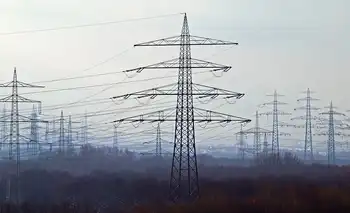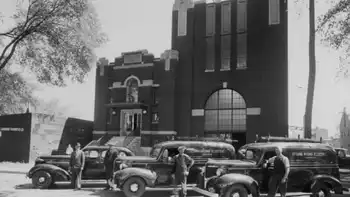The grandfather of geothermal
By Associated Press
CSA Z463 Electrical Maintenance -
Our customized live online or in‑person group training can be delivered to your staff at your location.

- Live Online
- 6 hours Instructor-led
- Group Training Available
Pat Falk says the free food went over better than his sales pitch.
"It was like selling snake oil," Falk, 70, recalled. "When we told these hay-shakers we'd drill five holes in their back yard and we could heat their home for a dollar a day, they thought we were nutty — and we weren't sure we weren't."
Since 1979, Hankinson-based Falk Groundsource Technologies has installed several hundred geothermal systems in homes, schools, churches and businesses throughout the U.S., saving hundreds of tanker-loads of heating fuel, he said.
Geothermal systems transfer heat from under ground through a system of loops that circulate fluids. The system can be reversed to cool a building.
Falk, a former water well driller, knew his days in that job were numbered in the mid-1970s, when rural areas in eastern North Dakota started tapping into water pipelines and bottled water began appearing in grocery stores. He feared his well-drilling business would go the way of the buggy whip.
"I had to do something — I had all this equipment and I had to eat," he said.
Falk, who had been drilling water wells since the 1950s, knew from experience that warm air could be pulled from the Earth along with water. From an article in a science magazine, he found a company in Florida building units that captured air from underground and ran it through a refrigerated loop system to cool buildings.
"They were using them in Florida for air conditioning, and I wanted to take it up north and make a heater out of it," he said.
"If it could work in North Dakota," Falk figured, "it could work anywhere."
Falk drilled holes around his yard and installed the system in his home. He couldn't wait to show it off.
"We had a pork feed and invited everybody we could find in a 40-mile area to come look at it," he said.
Falk sold seven units, all of which are still operating at present, he said. His first commercial job was installing a system a short time later at the Central Valley Public School in Buxton. He said it was the first commercial building in the state to use geothermal technology.
Jerry Higgins, the school's head custodian, said the retrofitted system's heat pumps and fans wore out recently, typical of a 30-year-old system.
The school's new gymnasium uses a geothermal system, which cost the district several thousand dollars more to install than a traditional heating and cooling, he said. But he believes is saves money in the end.
"With fuel's costs, I'm sure we're saving money," Higgins said. "It's a real nice system."
Karl Gawell, executive director of the Washington D.C.-based Geothermal Energy Association, said about 3 million homes in the U.S. use geothermal systems. The industry is growing at about 30 percent annually, but it's hamstrung by the lack of people like Falk, he said.
"Drillers and installers are really in demand," Gawell said. "We need to train people to keep up with this 30 percent growth rate."
The number of permits issued in North Dakota for geothermal heating and cooling systems surpassed 500 in December, said Lorraine Manz, a geologist with the state Geological Survey in Bismarck. Two-thirds of the permits have been issued in the past four years, she said.
In 2008, more than 140 permits were issued by the agency, the most in a single year, Manz said.
"When fuel prices started to rise, the number of installations went up right along with it," Manz said.
Homeowners and businesses using geothermal energy are eligible for tax credits, she said.
"The initial outlay is expensive — that's the only real drawback I see in these systems," she said. "But in the long run, you will recoup that cost because your annual heating bills are going to plummet."
The largest system in the state was installed last year in Fargo, at Microsoft's campus, Manz said. The 500-ton system provides heating and cooling at two of the company's buildings that total about 185,000 square feet, she said.
Falk said his company worked on that project.
The number of wells needed for most homes is five to seven, and most are drilled about 150 feet deep, Manz said. The Microsoft project has 704 wells, she said.
Manz, who reviews drilling for geothermal projects in North Dakota, said she's considering retrofitting her own home in Bismarck with a system.
"Personally, I'm sold on the idea," Manz said. "It's clean, environmentally friendly, unlimited, and unobtrusive. I really believe it's the way to go, the way of the future."
Manz said it will cost about $20,000 to install a system at her home, though she believes the system will pay for itself within a decade through lower heating bills.
Falk estimated his home heating bill December would have been nearly $650 if he had not replaced his heating fuel-burning furnace with a geothermal system. Instead, his heating bill was less than $60 for that month, one of the coldest on record in North Dakota.
Falk still has trouble convincing most people of the benefits of capturing geothermal energy, but he thinks that will change.
"The sun shines on the Earth and the heat is stored in the Earth, waiting for us to use it," Falk said. "We're only scratching the surface on this."











